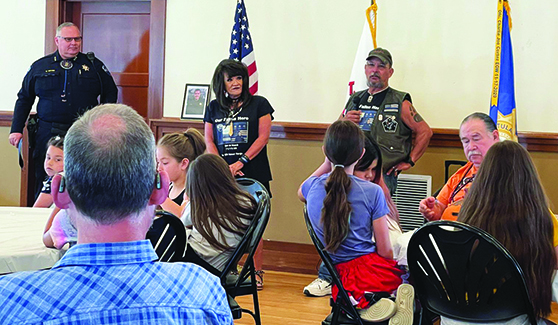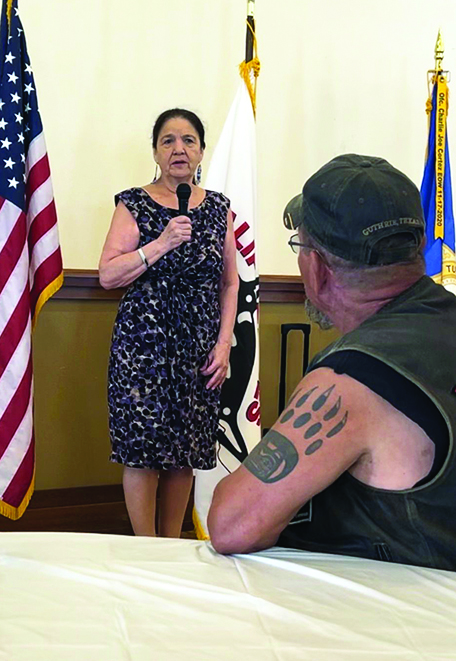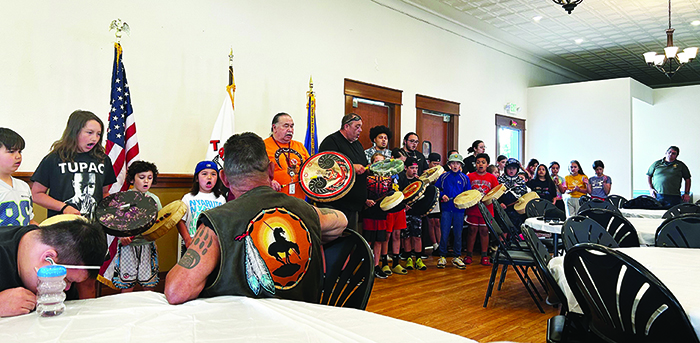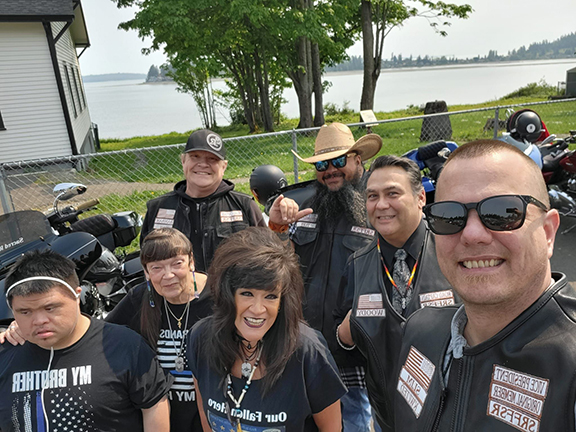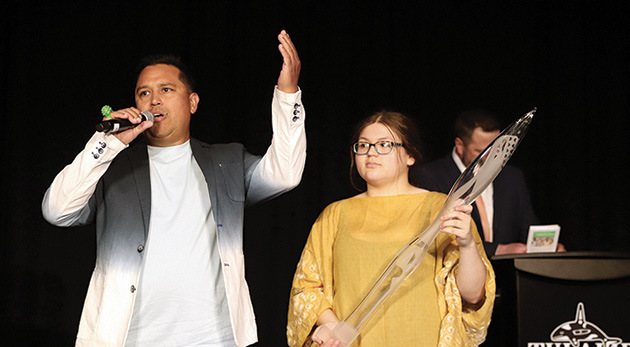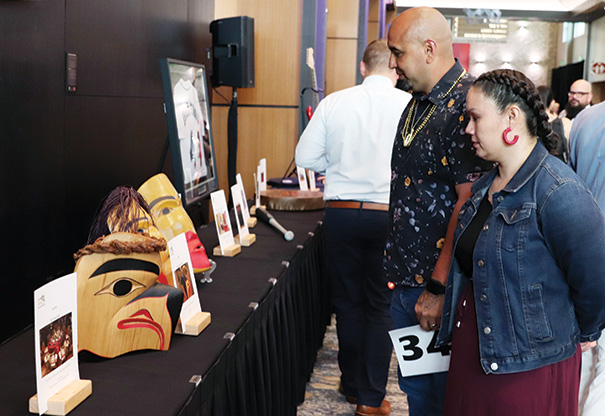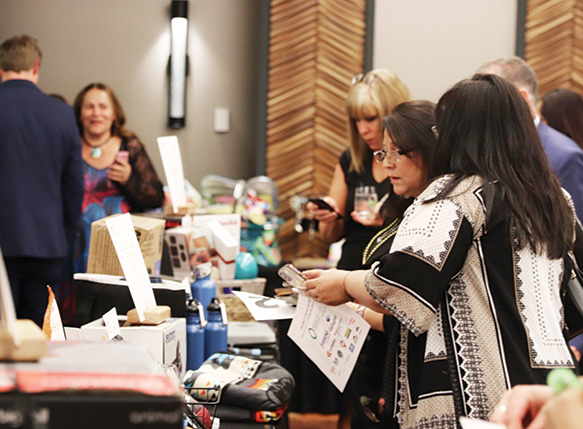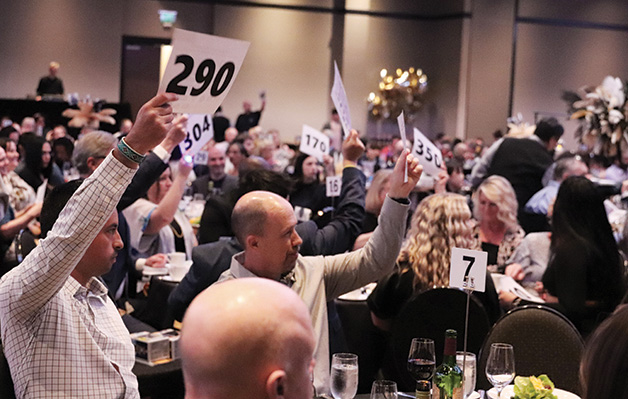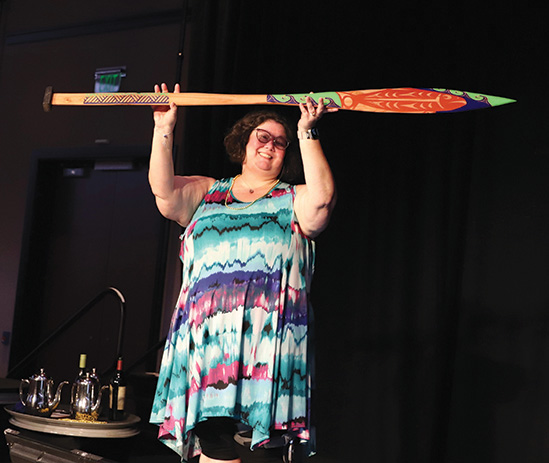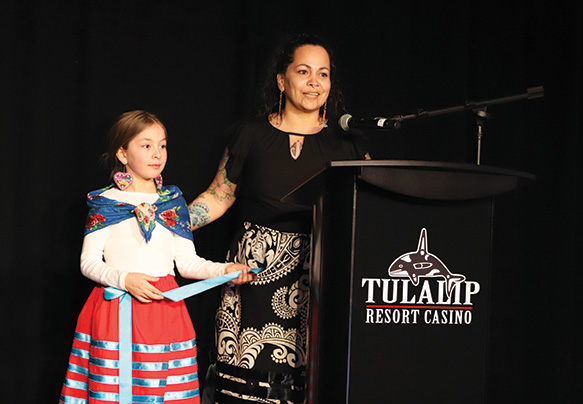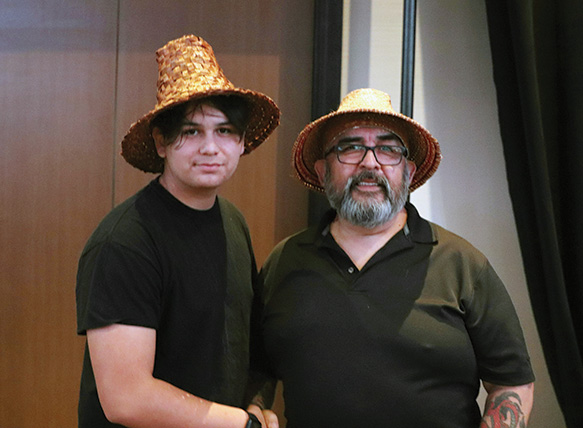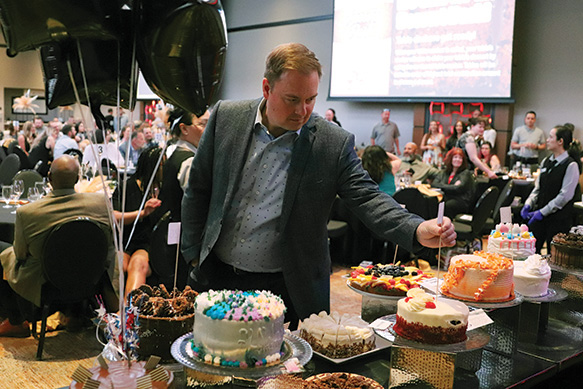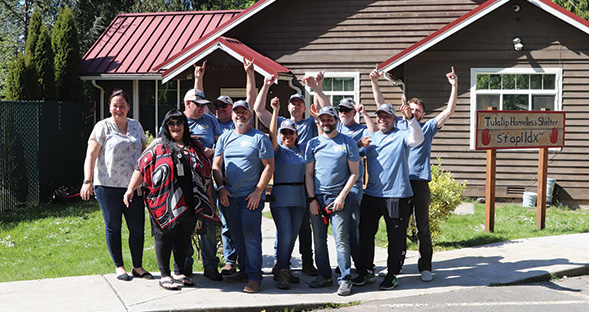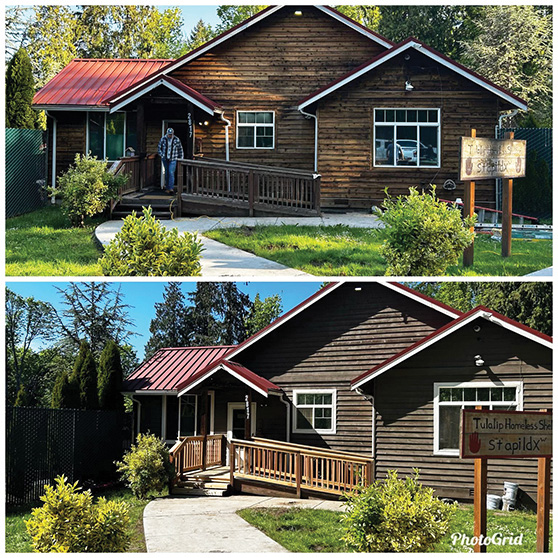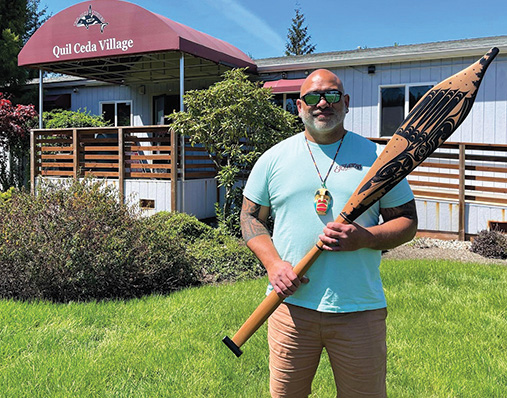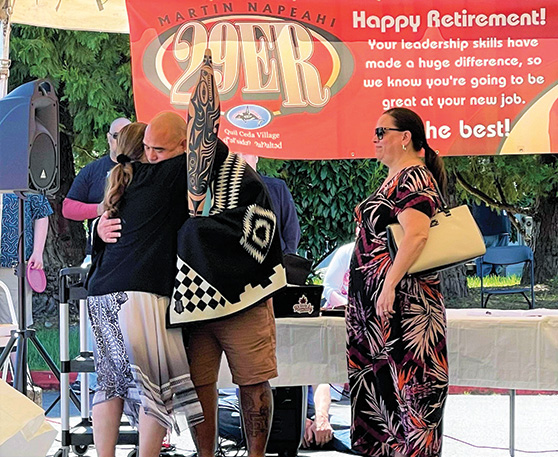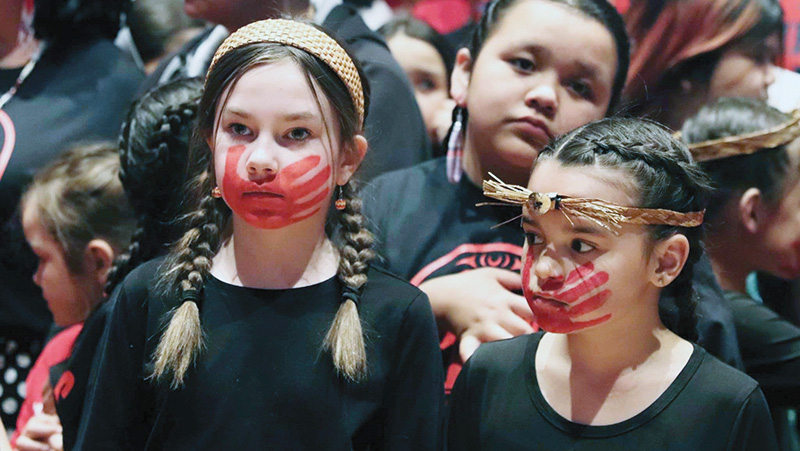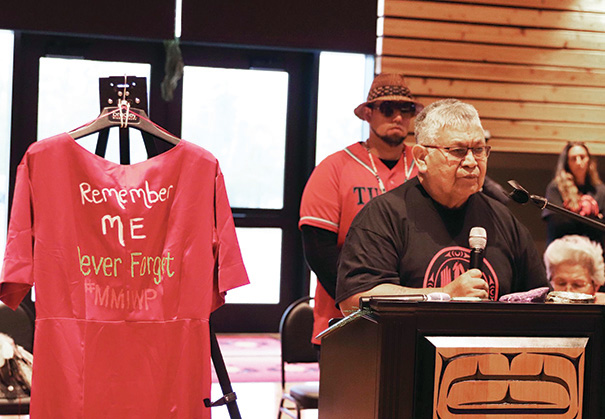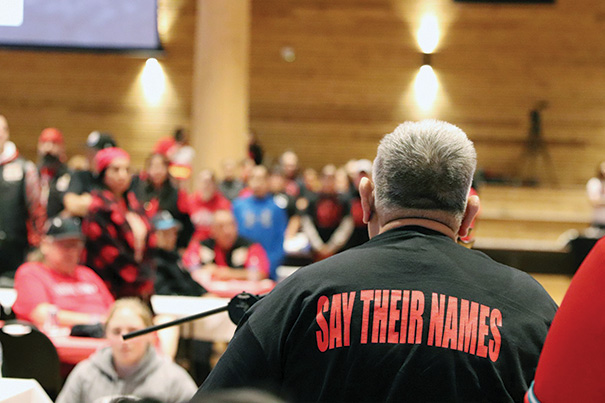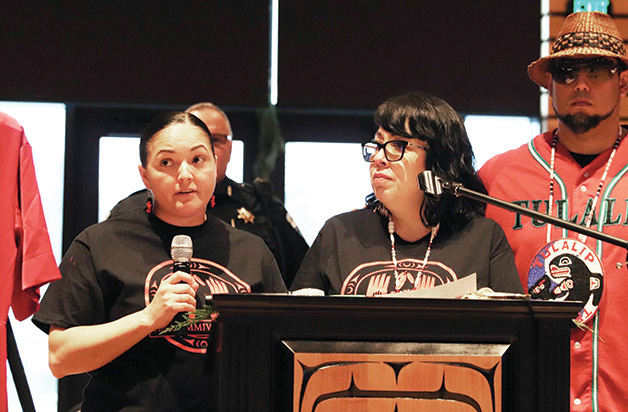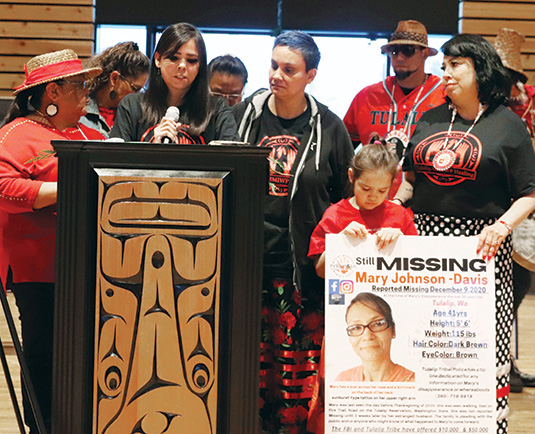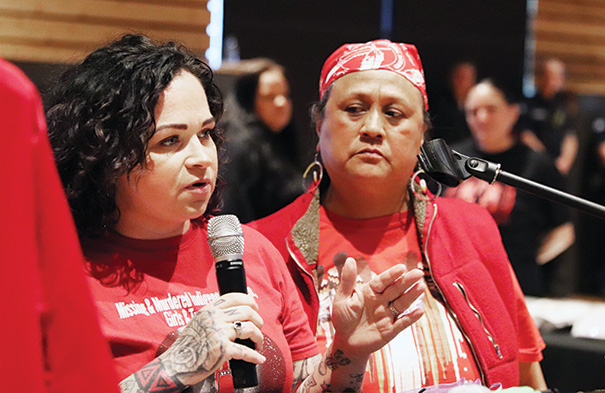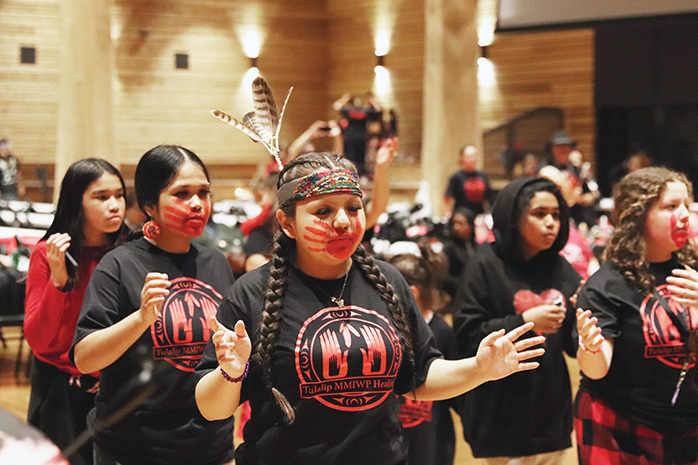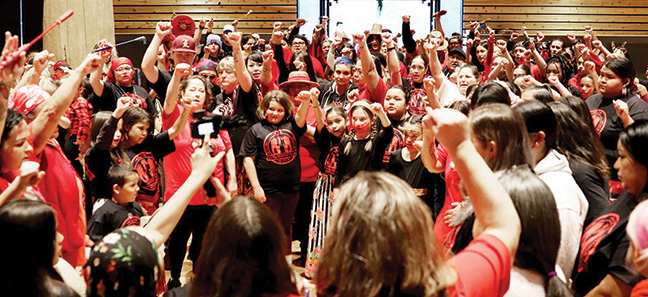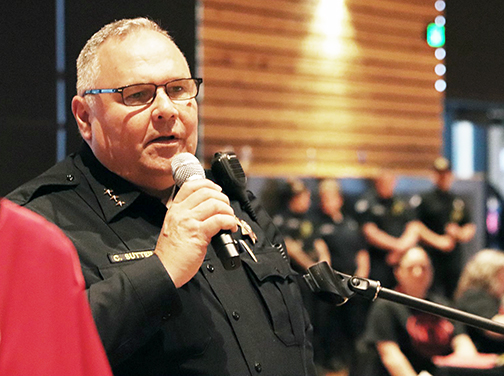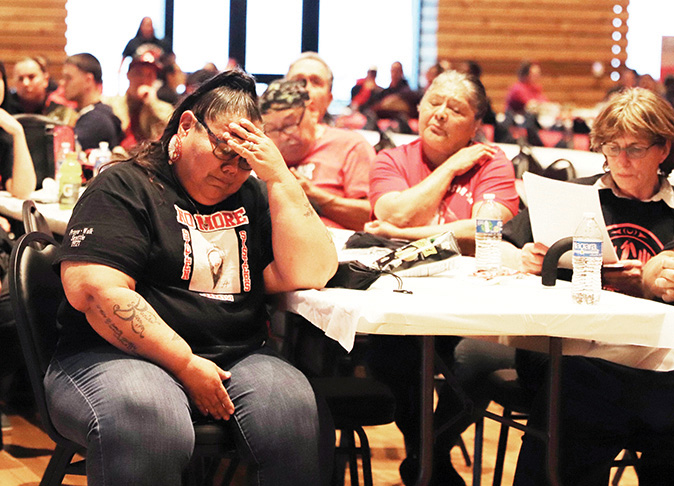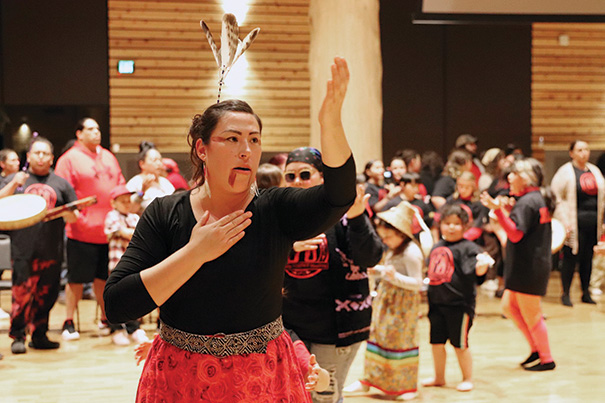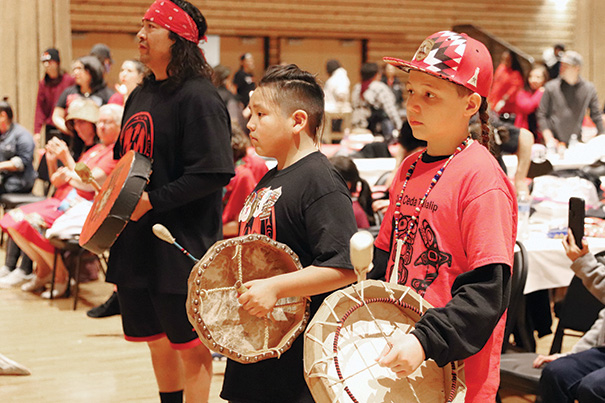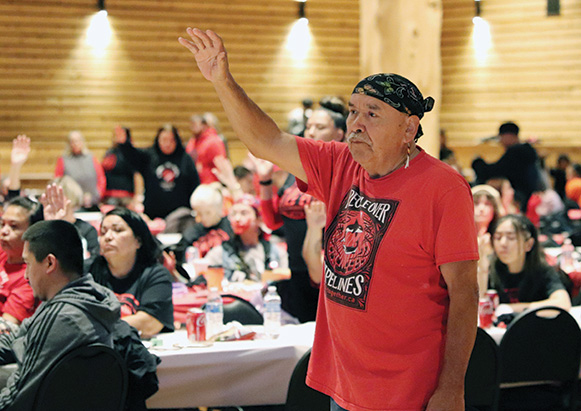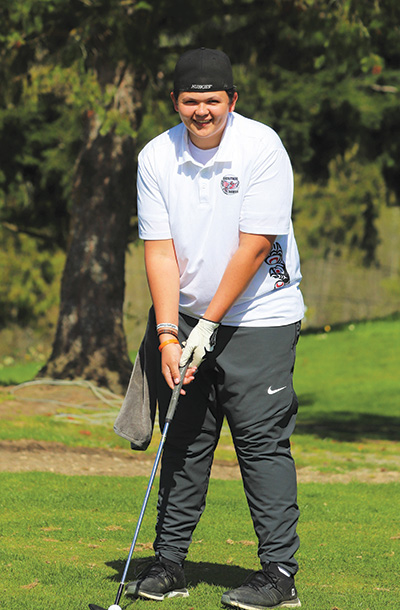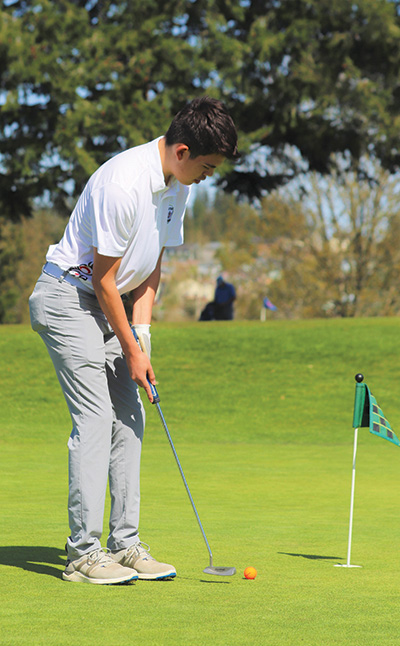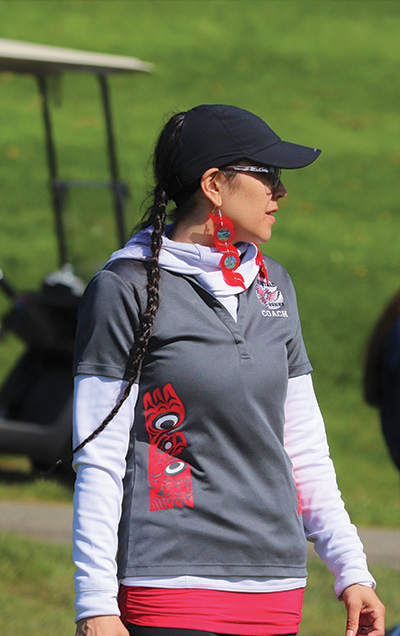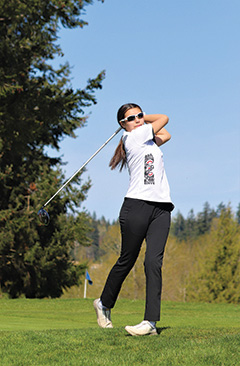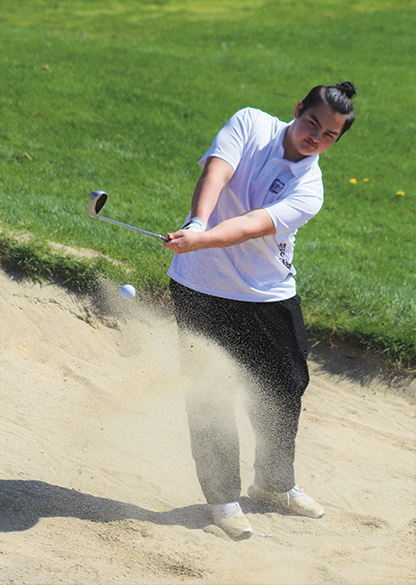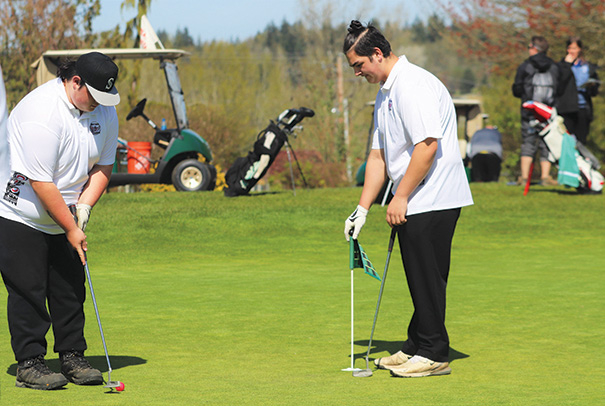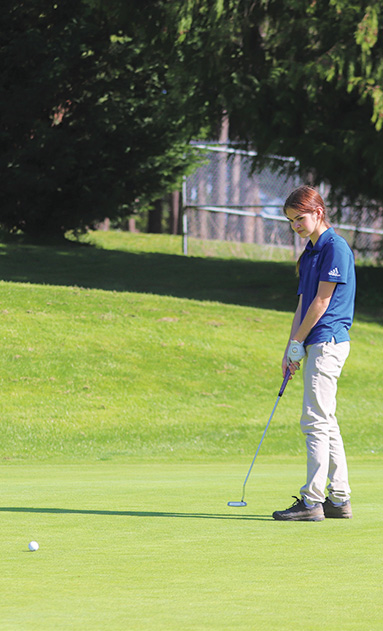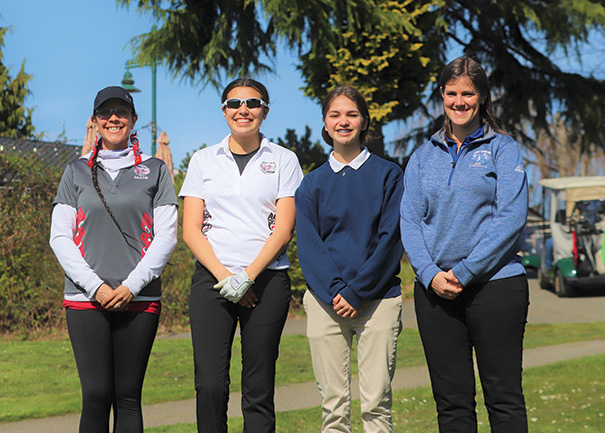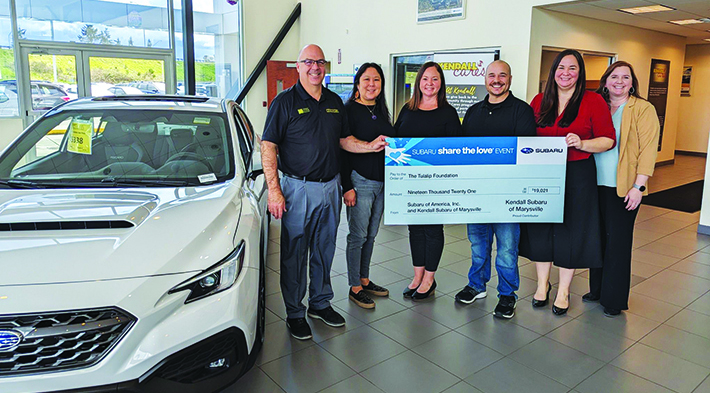
By Kalvin Valdillez, Tulalip News; photo courtesy of Nicole Sieminski
Six Tulalip tribal departments sang nothing but praises about the Tulalip Foundation for their assistance in getting their projects up and running this year, as well as expanding their program’s outreach and services for the community. And it’s a guarantee that if we were to speak about every project that the Foundation has helped since its inception in 2007, countless other tribal departments and outside organizations would join in on the chorus.
Nicole Sieminski, the woman behind the scenes, has made a huge impact within the tribal community from the moment she took on the role of the Foundation’s Executive Director in the mid-teens of this millennia. Through her hard work and guidance, the non-profit has become a well-known organization, and therefore, many local businesses and nationwide corporations have donated thousands of dollars for the betterment of both Tulalip’s governmental programs as well as community-led and focused projects.
The Tulalip Foundation has helped raise monies, and also accepted and dispersed donated funds, on behalf of numerous efforts and causes based on three core values: culture, justice and education. Undergoing a recent strategic planning process, the Foundation is excited to announce that they expanded from those three project support areas to five – culture and natural resources, law and justice, education and workforce, community and development, and health and social. These newly defined areas give the Foundation the ability to fully support Tulalip’s community at large.
“We’re currently working with fourteen tribal programs and departments and a couple outside ones as well,” said Nicole. “We just reorganized a little and our new project support areas really gives us that flexibility that we need to support our community.”
Over the past several years, the Tulalip Foundation has been the recipient of a yearly donation from Kendall Subaru of Marysville. Throughout the winter months, Subaru dealerships participate in a nationwide initiative known as the Share the Love Event in which local dealerships contribute a donation to an organization or charity of their choosing each time a vehicle is sold throughout the duration of the event. As Kendall Subaru’s handpicked ‘hometown charity’, the Foundation has been fortunate to accept upwards of $20,000 each year that they have been selected.
Following a springtime check presentation, the Foundation divvies up the donation into $5,000 mini grants which programs, projects, and departments can then apply for. After receiving last year’s donation of $25,000, the Foundation began their strategic planning process and decided to hold onto those funds until the reorg was completed. Combined with this year’s Share the Love donation, the Foundation was able to award a total of six mini grants in 2023.
Upon hearing where the mini grants were allocated, Tulalip News spoke with all six of those recipients to discuss how their programs will benefit from the donation and how they plan to utilize those mini grant funds.
Tulalip Vocational Training Center – Lisa Telford, TERO TVTC Family Career Navigator
We got a mini grant to update our welding supplies so we can do a welding class. It will be focused on the basics of welding, so you’re not coming out as certified welder, but you’ll have a better understanding of how to lay a bead. The funds are going to refurbishing the machines that we already have, making sure they’re usable, and purchasing another.
We’re always trying to expand what we teach so people can have a good base for their career or to further their career. For me, I’m always looking for ways to expand their knowledge so they’re more successful, and it just so happens that the mini grant came up.
We have a graduation this Friday (5/26) and we are recruiting for our new classes that starts in September!
Tulalip Legacy of Healing and Tulalip Child Advocacy Center – Sydney Gilbert, CAC/LOH Coordinator
It feels great and supportive to receive these funds for our clients. We were able to get one mini grant for each center, and that will be able to be used directly for client assistance. We do receive a lot of grant funding that does go towards client assistance, but often times there isn’t endless flexibility with the things you can use those funds for. So having access to these funds, we can really meet our clients where they’re at, so they can work with their advocate to identify what their needs are in their situation, so we can financially assist in a much more flexible way.
There are so many barriers when you think about domestic violence. Leaving an abusive situation, a lot of times abusers financially silo their victims, so they don’t have access to funds. A lot of examples people run into is the ability to bring their pets, you might have to board an animal and that costs money, you might have continued vet care. Animals and pets are really important to people so being able to potentially assist with getting their pets out of the situation is a more flexible cost that we can assist with.
We just want to honor the fact the victims and survivors are the expert in their story, they know what they need, and we need to be listening to them and supporting them. Thank you to the Tulalip Foundation and we’re really happy to have access to those funds.
Tulalip Office of Civil Legal Aid – Chori Folkman, TOCLA Lead Attorney/Youth Attorney
It’s incredibly supportive of the Tulalip Foundation to award us with this grant because it’s funding a really important piece of infrastructure that we need to be able to operate as a law office. What it’s going toward is to pay for an annual subscription to a legal case management system. A client management system that allows us to be able to serve the needs of the Tulalip community through our civil legal aid office.
It allows us to keep all files, client contact information, the ability to conflict check, and access information all in one place. It’s through the web, so we can access it from any place we are, whether it’s in the courtroom, in the community, or on the weekend dealing with an emergency, we can access our entire case files. It also allows to ensure confidentiality between our different divisions.
The Tulalip Office of Civil Legal Aid is holding office hours every Monday through Thursday from 10:00 a.m. to 1:00 p.m. where tribal members can stop by and get screened to talk to our attorney that morning about their legal needs. We’ll also be having open office hours once a month at the admin building. People can drop by anytime during normal business hours to talk to our pro se navigator who can give them guidance on how to fill out forms or the legal process, and that’s accessible by phone or in person all week.
Natural Resources: Education and Outreach – Melissa Gobin, Environmental and Education Outreach Coordinator
“The $5,000 that we got from the Foundation mini grant is being used to get equipment for cedar pulling, for being out in the woods. I am trying to get more rain gear for the kids.
We’re also going to be doing fish camps, because we had fish camp and mountain camp going before COVID, so we’re trying to get that back up and running. In the middle of July, we’re going to be doing our first fish camp at the youth center, so it’s close. We’re going to bring the kids out fishing, bring them back and teach them how we prepare it, how we store it for the whole year, smoking, canning, all that kind of stuff. We’re going to try to build a smoker on the beach, that’s our big goal, to have the youth help build that smoker and teach how we traditionally made sure we had salmon for the whole year.
I think the kids really need to know about natural resources in a way that’s fun, and not just on paper. I want them to see the different plants and medicines we have. And see why we’re protecting these wetlands, why we’re protecting the forest, why we’re trying to go out and make buffer zones to the fish. You can see it in their eyes once they get out there and start getting into everything, they get excited. You can see which kids want to come back and work in natural resources. And that’s what I’m really trying to do, after they go to college, get them back here and working for us.
Natural Resources: Restoration, Acquisition, and Stewardship Program – Austin Richard, Stewardship Ecologist
Receiving this mini grant is really valuable to our program to help alleviate capacity issues and support day to day functions. Our program has received multiple large grants to support salmon habitat restoration work, but the flexibility around this mini grant allows us to purchase equipment and gear in a more efficient way that will help support larger scale restoration projects from the ground up.
Funding from this mini grant will support critical efforts to provide the equipment and gear necessary to further prevent the spread of invasive plants that negatively impact Tulalip land and Tribal member’s properties. The majority of the funds will be used to purchase a Conex container, which will allow us to store our equipment (e.g., brush cutters, shovels, weed wrenches, etc…) in a more spacious and organized manner. This will also improve our ability to obtain additional gear and equipment that will help accomplish the Restoration, Acquisition, and Stewardship Program’s ultimate goal of protecting and restoring Tulalip Treaty Retained Resources through conservation, stewardship, restoration, and enhancement of critical habitat and natural processes.
It is exciting to get an inside look of the Tulalip Foundation and their process of dispersing donations throughout the community while remaining focused on those key project support areas. They recently received a surprise $25,000 donation from the Taylor Family Foundation through the Community Foundation of Snohomish County, and the Tulalip Foundation is eager to continue to build upon that newfound relationship. The Foundation also assisted the Tulalip Village of Hope by accepting a $3,000 donation on their behalf from homebuilding company, LGI Homes. And of course, the Tulalip Foundation will be hosting their annual Salmon Bake Fundraiser to benefit the Hibulb Cultural Center on August 19.
And if you are interested in learning more or looking for additional info, listed below are the contacts of the Tulalip Foundation and each of the programs that were awarded this year’s mini grants.
- Tulalip Foundation: (360) 716-5400
- Tulalip TERO Vocational Training Center: (360) 716-4760
- Tulalip Legacy of Healing: (360) 716-4100
- Tulalip Child Advocacy Center: (360) 716-5437
- Tulalip Office of Civil Legal Aid: (360) 716-4773
- Tulalip Natural Resources Department: (360) 716-4617
